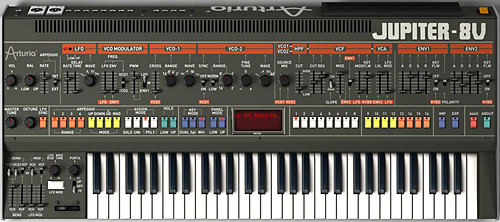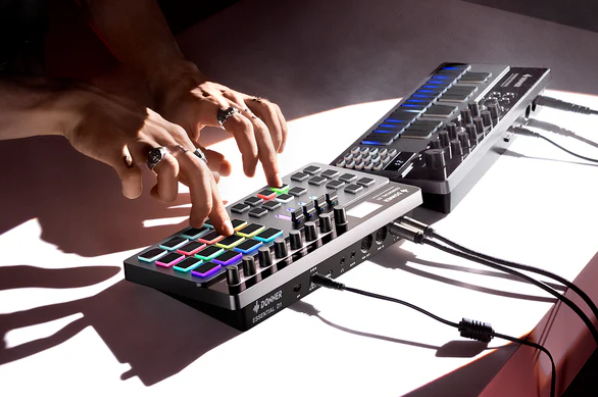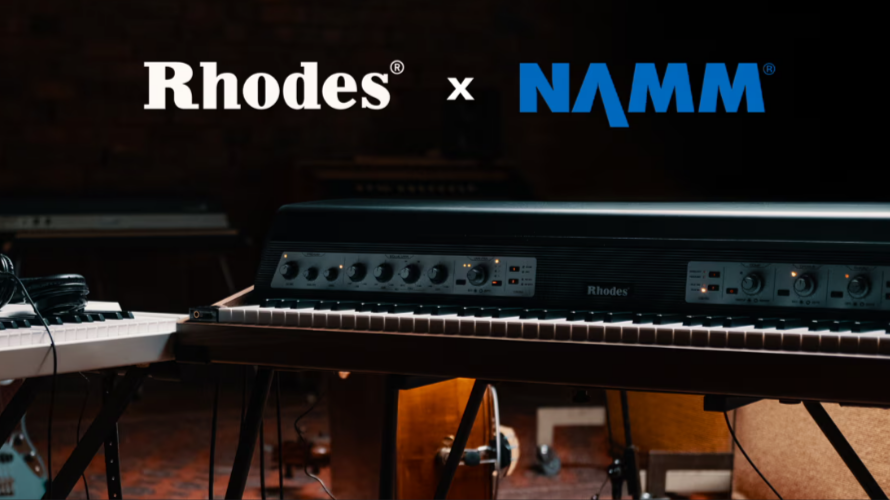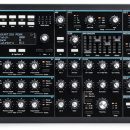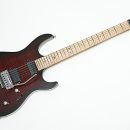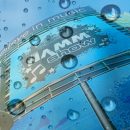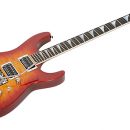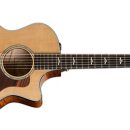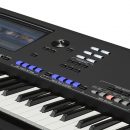
(In his best TV announcer/Don Pardo voice) “We now continue from last month’s episode where our fearless reviewer braved his Editor’s demands for yet another piano plug-in review. The review was admirably done, of course, but does Jason finally get to play with some fun synthesizer gear? Tune in and find out!”
 Indeed, this month, we have Arturia’s JP-8V virtual analog synthesizer in our hands. Well-known for creating soft-synth versions of classic analog synthesizers, Arturia has now tackled the venerable Roland Jupiter-8. A monster synth from the early to mid-‘80s, the Jupiter-8’s unique sound and personality was heard on numerous recordings from artists like Howard Jones, Tears For Fears, Simple Minds, Depeche Mode, Duran Duran, and many other pioneering synth-pop bands.
Indeed, this month, we have Arturia’s JP-8V virtual analog synthesizer in our hands. Well-known for creating soft-synth versions of classic analog synthesizers, Arturia has now tackled the venerable Roland Jupiter-8. A monster synth from the early to mid-‘80s, the Jupiter-8’s unique sound and personality was heard on numerous recordings from artists like Howard Jones, Tears For Fears, Simple Minds, Depeche Mode, Duran Duran, and many other pioneering synth-pop bands.
Despite widespread use by numerous pros, the synth world had never seen huge numbers of unit sales — not until the Korg M1 came along and sold over 250,000 units. The classic Jupiter-8 only sold approximately 2,000 units worldwide, so getting your hands on one has always been quite a challenge.
| Category | Value | Rating |
| Features | 20% | |
| Usability | 25% | |
| Sound | 25% | |
| Documentation & Support | 10% | |
| Price | 20% | |
| OVERALL RATING = 3.6, which earns it a WIHO Award! 3.6 stars or better: Outstanding, WIHO Award 3 stars or better: Worth considering 2 stars or better: Suited to specific needs 1 star or less: Not recommended |
||
For that reason, Jupiter 8 fans (and analog synth fans in general) have much to rejoice about with this classic recreation. Although we weren’t able to get our hands on an original unit for direct comparison, the Arturia JP-8V certainly comes close to reproducing the classic sounds that Roland’s synthesizer was known for, and it’s quite a good sounding virtual analog synth in its own right, with great external control, even if you aren’t interested in a specific recreation of a legendary synthesizer.
Features
The JP-8V comes as both a standalone program as well as VST, RTAS, and AU formats, so both Mac and PC platforms are well represented. Installation requires a Syncroft dongle authorization key, included in the box.
The GUI is quite nice to look at. The bottom half of the window shows an actual recreation of the entire original JP-8 keyboard. The original eight-voice Jupiter-8 had multi-colored buttons, and they are all back in their rainbow glory here. Even better, the Jupiter-8V improved upon the real thing underneath the hood: it is capable of 32-note polyphony and has dual and unison modes.
Part of the Jupiter-8’s winning design was its multiple sliders and knobs for sound modification, and these are also all here. The JP-8V has a unique audio structure featuring two oscillators per voice (sixteen oscillators in total), two LFOs, two filters, and two envelopes. With a decent MIDI controller, one could even assign most (if not all) of these functions to avoid tedious mouse clicks.
In minimized mode, there is a small gray strip above the keyboard that shows the Preset name and number, MIDI channel, play mode, unison and polyphony selector, and CPU usage (or in some cases, abusage). When the window is clicked for maximized mode (the keyboard slides down to reveal more controls), you have access to three tabs:
- Preset: 400 presets with sound selections and listings for the upper and lower keyboard halves for splits, unisons, and dual mode
- Modulations: Includes two subheadings for Galaxy (an innovative feature that will be explained below), and Sequencer (also below)
- Effects: Includes chorus/flanger, distortion, parametric EQ, phaser, and ring modulation
The Galaxy module (under Modulations) allows you to use three LFO types against each other on an x-y plane. The first two LFOs each modulate along their own x and y-axis, which can then be rotated by the third LFO using its Angle and Rate controls.
Basic LFO shapes include sawtooth, square, sine or triangle with rates of 0 to 50 Hz, and all are syncable. The three LFOs combine to form an intricate pattern of movement, resulting in an interesting, evolving sound. This effect is graphically presented nicely on screen, making the whole process a LOT easier to comprehend than it may sound on paper. Indeed, this is a very cool feature that we haven’t seen implemented in this manner elsewhere.
Within the Modulations tab is a 32-step sequencer. This is represented graphically in an easy-to-use form. It can be used to create complex melodic and/or dynamic modulations over pitch and pulse width independently for each oscillator; it can modulate the HPF cutoff; it can modulate cutoff and resonance for the VCF low-pass; and it can alter the VCA amplitude. Each modulation output has a knob for controlling the intensity, as well as a Q button. The Q button, to quote Arturia’s manual, is the “quantification of the modulation setting by semitones.” It is used to regulate the levels of each step of a sequence during the creation (or playing) of a melodic sequence.
To program, you set the sequence length (1 to 32 steps) and then draw in semitone/step values using the Pen or Line tools. There's also a random waveform button that draws in a random sequence that you can keep or tweak to taste. For each step there's a Glide (portamento) and Accent button, as well as a button for linking the selected step with the following step (legato) when in Envelope Retrigger mode.
The sequencer can start and stop according to Note On/Off, MIDI commands or be left free-running at an internal tempo as high as 240 bpm. It can also sync to the host tempo in half-note to 128th-note intervals, including triplets. Playback direction can be forward, backward, forward/backward or random, and steps can be smoothed out, swung or accented by applying an adjustable attack-decay-level envelope to the cutoff frequency of the VCF lowpass filter.
To get quick access to the well known basic arpeggiator, there are dedicated buttons on the left of the GUI that has selections between one and four octaves, and in four directions: up, down, up/down or random. In Split mode, it works only on the lower part of the keyboard.
The Jupiter-8V has four effects that can be used simultaneously. One effect is placed between the VCO and the filter, and one in between the filter and VCA. Key follow, LFO, envelopes, step sequencer or Galaxy's x-y values can all modulate effect parameters. Additionally, two Patch effects are may be used on the end of the synthesis chain immediately after the VCA output. However, these stereo effects are unable to receive external modulations.
Usability
We installed the JP-8V on an Apple Power Macintosh G4 dual 1.42 GHz, and tested both the stand-alone version and the RTAS version in a Pro Tools LE 7.3 environment. Installing the program was no problem — we were up and running in minutes. As stated earlier, the graphic interface is attractive and nicely laid out; however, if this is the first time a user is interacting with a JP-8, it might take a little bit to get used to all of the original sliders and buttons represented in graphical, point-and-click form. Indeed, one would be well advised to control the JP-8V with a MIDI controller or synth, as it makes the whole process of accessing and modifying sounds much easier than using a mouse.
We tried the standalone version first. At first, the program wouldn’t recognize our master controller, an 88-key Korg Triton LE (we changed controllers afterwards — more on that later). We then discovered this was our fault — you need to select the MIDI controller device via a small drop-down menu. Our small gripe is that this menu is labeled File! Under the File menu is a sub-menu for MIDI selections. Not a big deal by any means, but for those of us who like to avoid manuals, it would have been easier to find if MIDI selections were actually found in a more appropriate location, such as under a Preferences menu selection.
Once we got our MIDI system set up correctly, everything worked just fine. While initial navigation with a mouse was bit cumbersome (given all the controls on the Jupiter-8 control surface), once we “taught” the system which hardware buttons/knobs/etc. correspond to given parameters, it was a much more pleasing experience. The system “learns” by clicking on any on-screen knob, level, button, and pressing the open-Apple/Command button on your Mac (or the Control key on a PC). The learn window pops up, you click “learn” and then move the hardware you want to assign to that parameter, and instantly it works!
We then got an idea…having a long history with owning and using Roland gear, we decided to grab our original Roland Juno-106 and set it up as the JP-8V controller. Since the Juno-106 has many of the same control surface features as its more-powerful Jupiter-8 cousin, we thought it would make for a fun interface to the new virtual instrument.
This was very cool, if not nostalgic: using a real Juno-106 to control our JP-8V. Certainly, there weren’t enough controls on the Juno-106 to correspond to every aspect of the JP-8V, but the basic controls mapped out very nicely, given that Roland’s “J” series (Junos and Jupiters) shared some design similarities. As much as we love our Juno-106, we loved it even more when it “became” a Jupiter-8!
As always, software such as soft synths demand CPU power, and Arturia’s JP-8V is no exception. Our test system was an older Mac. A dual-processor G4, however speedy, is now considered two generations behind the current Intel processors (despite widespread use in many studios). As a result, there were times the sound became a bit distorted when we were overtaxing the CPU. But this was usually only a problem when a complicated sound was being used with a higher polyphony count. The system was generally quite usable on this older machine!
We then tried the JP-8V in a Pro Tools environment. Using a five-piece rock band’s pre-recorded tracks, we then added some JP-8V tracks to the mix. It worked flawlessly, and the JP-8V sounded great. Again, the CPU drain was only an issue when pushing the program to higher polyphony or complexity, and we are confident that a newer computer wouldn’t experience this occasional performance hickup.
Sound
OK… we admit it. We are quite fond of Roland gear. Our studios have a Juno-106 and multiple XP- and JV-series synths, all stacked with multiple voice-expansion cards, so we are very familiar with Roland’s sound. Unfortunately, though, we were unable to perform a true side-by-side comparison between a real Jupiter-8 and the JP-8V.
Having said that, there’s no question that Roland’s “J” series sound is well captured. And just as importantly, the JP-8V sounds great in its own right, even without any comparison to the real thing. A great majority of the preset sounds were very inspiring to start composing with. The bubbling, percolating arpeggiations were wonderful, and there was so much control over parameters that it is hard not to get hooked on sound design with this virtual instrument.
The pads, one of the Jupiter-8’s strong suits, sounded thick and luscious. One of our favorites was the preset “JMB-full pad,” which had a nice sparkle and swoosh to it.
Of course, there are many other wonderful sounds inside the JP-8V, and those familiar with 80’s music will certainly recognize some signature sounds of the day. We heard a great brassy pad that sounds like “I’ll Wait” from Van Halen’s 1984 album, a few “sequenced chord” presets that sound like things you’d hear on a classic New Order or Erasure CD, a few sine-wave/organ-esque sounds that would make Keith Emerson proud, and there’s even a dead-on “Axel-F” preset. In short, the JP-8 is a great sounding and fun synth to play.
Being admittedly a little biased, we would love to see Arturia expand the possibilities of JP-8V to include emulation of the Jupiter-8’s junior siblings like the Jupiter-6, Juno 60, and more. We don’t know how much longer our preset data cassettes will last!
Documentation and Product Support
The manual does a very good job of explaining both some general Roland history as well as Jupiter-8 specific history. It explained how the Jupiter-8 creates sound and how the JP-8V works. The manual clearly explained how the various controls can be altered, and it provides some useful tips on creating your own sounds. If only some of our other manuals were like this!
Price
Considering there were only 2,000 real Jupiter-8s made, and likely fewer still in working order, the price of a used Jupiter-8 is often thousands of dollars. For $249 MSRP (and a street price closer to $200), you can get nearly all the essence of a Jupiter-8, with an enhanced feature set, for a fraction of the price. Best of all, this product is only going to get better. This was version 1.0, and software updates are likely to make this excellent soft-synth even better. Go get it and play!
Contact Information
Arturia
www.arturia.com
| Evaluation Short-List |
|

